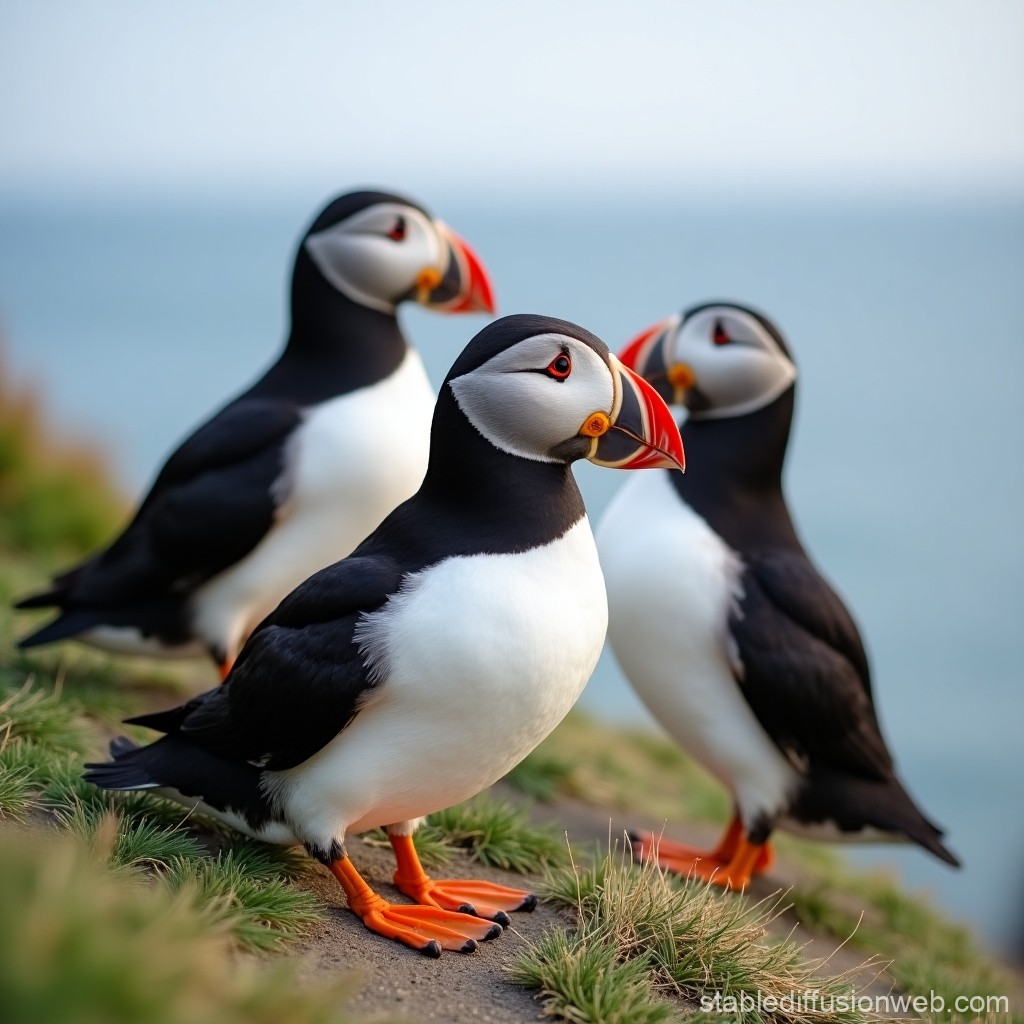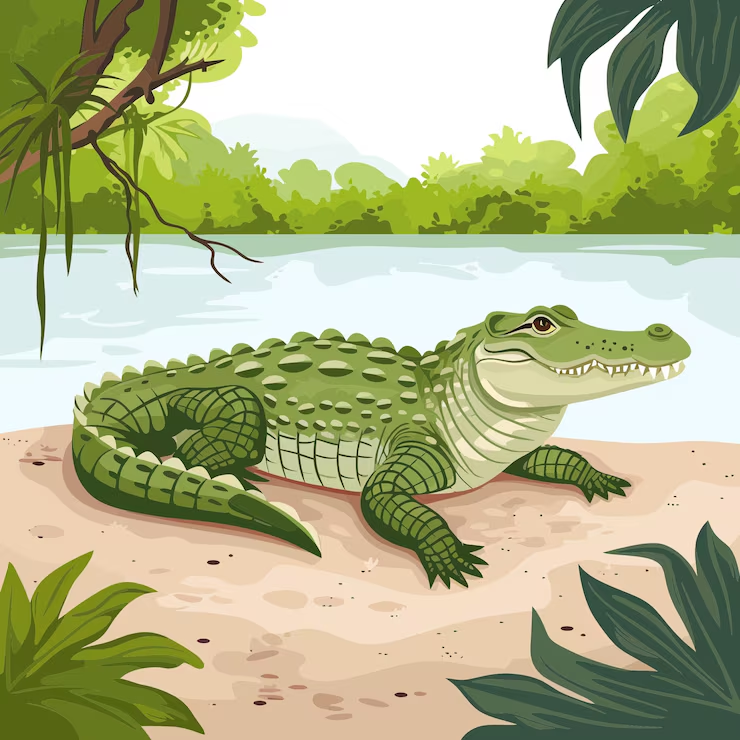Answers For [Forecast Q2-2025] - Canadian Puffins
Answers and detail explain for [Forecast Q2-2025] - Canadian Puffins
Explain
[Forecast Q2-2025] - Canadian Puffins

In today’s lecture, I would like to cover the most famous Canadian seabirds - the puffin.
Many have a love for this little bird, in its distinct black and white suit. Now endangered in Europe, our Canadian puffins may also be under threat.
Puffins in many lands have been hunted for their meat and eggs.
1In the early times, however, many hunters were after their feathers, which had waterproofing properties. In most cases, they were torn off, still attached to the skin, and then collected to be sewn together to create coats that were watertight for the damp climate. Since then, the puffin population has suffered as a result of this.
Today, puffins, like other seabirds, are facing threats from a number of sources.
They have natural predators but are also at risk from human interference.
2We are going to carry out a research to investigate how oil spilled by tankers and drilling operations can affect puffins' living.
We presume that their waterproofing ability can be heavily damaged, which can result in the little birds' death.
More research needs to be conducted into how we can reduce the damage done by such accidents.
3We also need to obtain more data on the reasons why the puffin population is decreasing in density in some areas.
While some factors are known, still others are not, and in order to ensure their survival, scientists need to understand the risks and hazards these little ones are facing.
Is destruction of their habitat a factor? This is what we also need to know.
Although puffins spend much of their lives at sea, they come to land each year to breed.
They build their nests often on rocky cliff tops, or burrow several feet into the soil, and lay only one egg per year.
4We believe areas close to vegetation are likely to attract puffins to breed and live there for quite a long time as the soil is deep enough for them to dig.
They at times use the grass to line their burrows along with leaves. However, this needs to be confirmed through more careful observation.
Well, you may be curious about the breeding of puffins. As a matter of fact, we have conducted research on that.
5Some puffin eggs are bigger in size than others, depending on the species.
The parent puffins usually mate for life, and both parents have a role in caring for the egg.
It generally takes the young puffin or the chick two weeks to hatch and come into the world.
6Adult male puffins are aggressive and fighting is commonplace among them.
They compete usually for attracting the same female puffin, or for occupying the best nesting site.
In the competition, they will try to topple each other, using their feet and wings in a flurry of action.
This may draw a crowd of ten or more puffin spectators.
The male puffin spends his time during nesting season maintaining the burrow and guarding it from dangers, whereas the females care for and feed the chick, feeding it throughout the day.
7Some researchers conclude that puffins may give frequent feeding to their chicks if they are nesting higher up on cliffs, but this needs further research.
Puffin's short wings are adapted for swimming with a flying technique underwater, which is an advantage compared with other kinds of birds.
8However, they have to be very careful to avoid any potential dangers because their predators such as foxes or eagles, especially some species introduced by humans can break into their nests, most of which are built on some remote, isolated islands.
Some domestic animals are also a great threat to the puffin population, as the puffin has no adaptations to avoid them, or protect themselves or their chicks.
As puffins typically have short wing spans, this can make it difficult for them to fly.
They need to beat their wings rapidly to stay in the air but can fly from 77 to 88 kilometres per hour.
9The puffin may at times use a slope to take off at a higher speed, with a run of ten to twelve feet.
10Nesting sites high up on cliff tops are good choices for puffins because altitude is a factor that determines their chances of survival.
In conclusion, the puffin is indeed endangered in many countries, but so far in Canada, it is safe.
This may change at any time, so we can all play a part in ensuring the survival of this remarkable species.
Questions 1-10
Complete the notes below. Write ONE WORD ONLY for each answer.
Canadian puffins
Originally, the number of puffins declined because people collected their 1 (feathers)
Future research
- The influence of spilled 2 (oil) on the puffins
- The unknown reasons for the decrease in the 3 (density) of puffin population in certain areas
- Puffins’ habitat - they may like to live near 4 (vegetation)
Findings
- The 5 (size) of puffin eggs is different.
- As puffins grow up, 6 (fighting) is common among the males.
- Puffins living in higher places feed their baby birds on a 7 (frequent) basis.
- 8 (predators) may enter puffins’ nests by isolated island .
- A 9 (slope) helps puffins fly faster.
- The 10 (altitude) of the nesting place influences puffins’ survival rates.
![[Forecast Q2-2025] - Biology lecture](https://static.helik.app/reading/8fd3d7d2-ccf9-47a3-8920-2e7a3b0d6607)
![[Forecast Q2-2025] - Living in the City](https://static.helik.app/reading/1a60bcf3-f3a7-4e9b-97a2-94d156a0de3b)
![[Forecast Q2-2025] - Student Union](https://static.helik.app/reading/fb443123-8c1d-447e-8c79-5a01650f4754)
![[Forecast Q2-2025] - Fruit-picking Job in an Orchard](https://static.helik.app/reading/e1968346-6c55-44ae-b8d3-f6a4fb7207b9)
![[Forecast Q2-2025] - University Crime Prevention](https://static.helik.app/reading/bdda593e-16d6-4c72-8a12-b116e917b27c)
![[Forecast Q2-2025] - Business Course](https://static.helik.app/reading/3308e282-99a6-4bcb-9d22-0b488701d968)
![[C20T1] - Choosing a restaurant](https://static.helik.app/reading/e9b21123-c43c-42fb-88b7-5d0be3a37e03)
